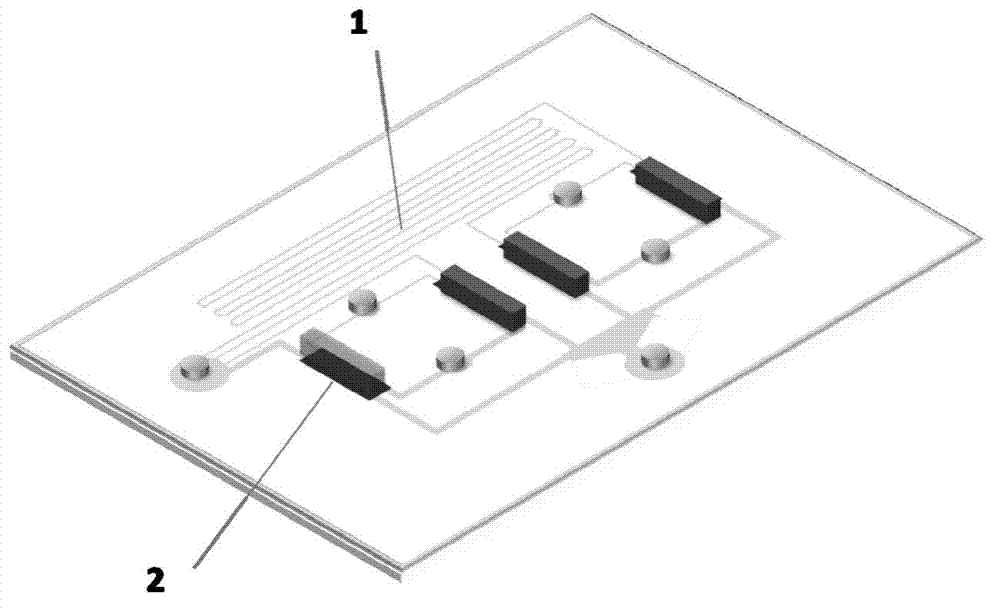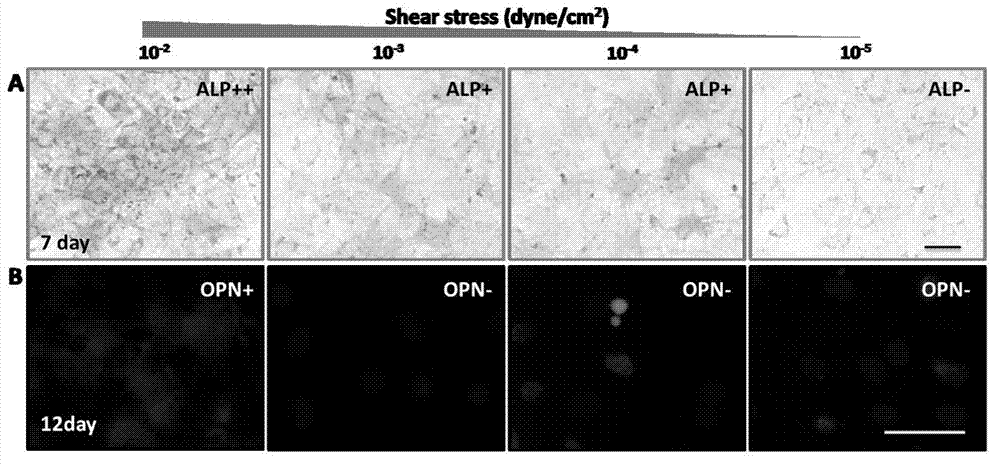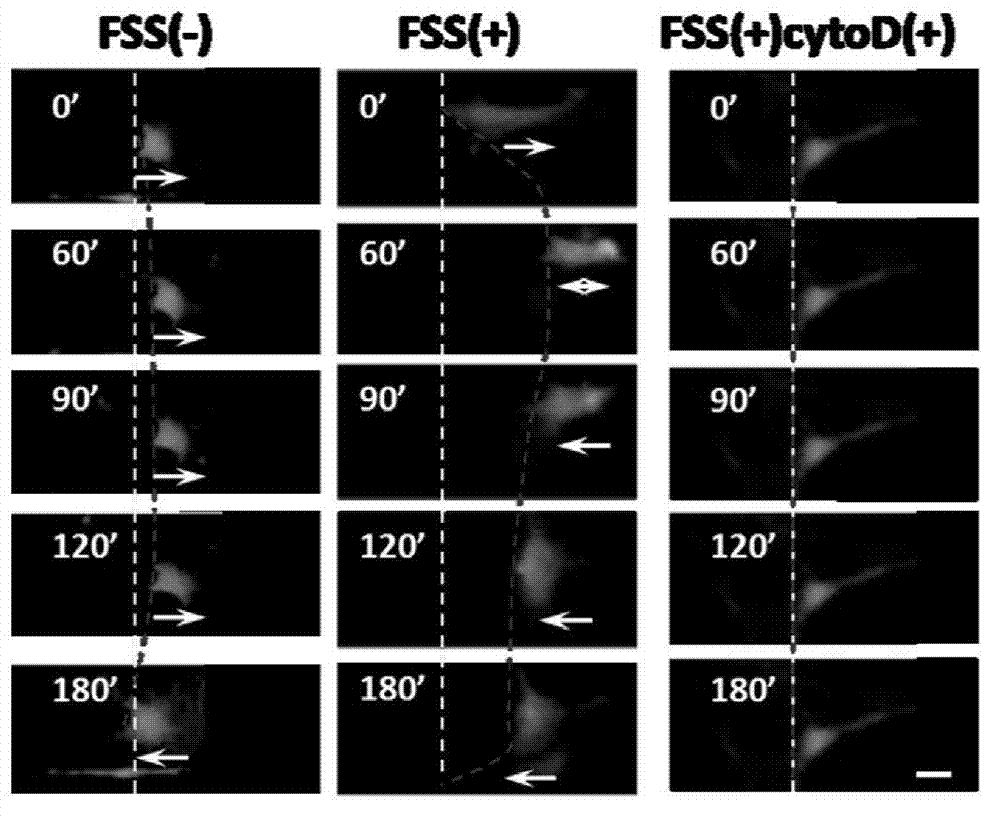Study on in vivo fluid shearing force simulation cell behaviors on basis of microfluidic chip system
A microfluidic chip, the technology of fluid shear force, applied in the measurement/inspection of microorganisms, the cultivation device of tissue cells/viruses, the method of stress-stimulating the growth of microorganisms, etc. It can achieve the effect of low consumption of reagents and cells, easy observation and detection, and simple operation.
- Summary
- Abstract
- Description
- Claims
- Application Information
AI Technical Summary
Problems solved by technology
Method used
Image
Examples
Embodiment 1
[0032] Using the microfluidic chip system designed and produced by the laboratory, the configuration is as follows: figure 1 As shown, the depth of the channel is 50 μm, and the width ranges from 50 μm to 1 mm. A total of 4 different fluid shear forces can be generated. When the flow rate of the syringe pump is 9 μL / h, the fluid shear force is theoretically calculated. For: 7.7×10 -3 ,9.9×10 -4 ,1.4×10 -4 and2.9×10-5 dyne / cm 2 . Chip inoculation of mouse embryonic mesenchymal stem cells, inoculation density 1×10 5 cells / ML, after 24 hours of cell attachment, replace with α-MEM medium containing 15% fetal bovine serum, apply fluid shear force, and after 7 days, osteoblasts were stained with ALP, photographed under a microscope, and analyzed by Image Pro software. The result is as image 3 As shown, the osteogenic differentiation behavior of mesenchymal stem cells is different under different fluid shear forces, and it can be seen that 7.7×10 -3 dyne / cm 2 Osteogenesis wa...
Embodiment 2
[0034] Using the microfluidic chip system designed and produced by the laboratory, the configuration is as follows: figure 1 As shown, the depth of the channel is 50 μm, and the width ranges from 50 μm to 1 mm. A total of 4 different fluid shear forces can be generated. When the flow rate of the syringe pump is 9 μL / h, the fluid shear force is theoretically calculated. For: 7.7×10 -3 ,9.9×10 -4 ,1.4×10 -4 and2.9×10 -5 dyne / cm 2 . Chip inoculation of mouse embryonic mesenchymal stem cells, inoculation density 1×10 5 cells / ML, after 24 hours of cell attachment, replace with LG-DMEM+10%FBS+0.1μM dexamethasone+50μg / ml ascorbic acid+100mMβ-glycerophosphate sodium osteogenic differentiation medium, apply fluid shear force, 7 Days later, osteogenesis was stained with ALP, and after 14 days, osteogenesis was stained with OPN, photographed under a microscope, and analyzed by Image Pro software. The osteogenic differentiation behavior of mesenchymal stem cells is different under ...
Embodiment 3
[0036] Osteoprogenitor cells: using the microfluidic chip system designed and produced by the laboratory, the fluid shear force range is 7.7×10 -3 ,9.9×10 -4 ,1.4×10 -4 and2.9×10 -5 dyne / cm 2 . The chip was inoculated with bone progenitor cell line 3T3-E1 at a seeding density of 1×10 5 cells / ML, after 24 hours of cell attachment, the medium was changed every day, and fluid shear force stimulation was applied. After 7 days of mechanical stimulation, ALP, a characteristic marker of osteogenesis, was detected, and it was found that fluid shear force can promote osteogenesis of osteoprogenitor cells. direction differentiation.
PUM
| Property | Measurement | Unit |
|---|---|---|
| height | aaaaa | aaaaa |
| width | aaaaa | aaaaa |
Abstract
Description
Claims
Application Information
 Login to View More
Login to View More - R&D
- Intellectual Property
- Life Sciences
- Materials
- Tech Scout
- Unparalleled Data Quality
- Higher Quality Content
- 60% Fewer Hallucinations
Browse by: Latest US Patents, China's latest patents, Technical Efficacy Thesaurus, Application Domain, Technology Topic, Popular Technical Reports.
© 2025 PatSnap. All rights reserved.Legal|Privacy policy|Modern Slavery Act Transparency Statement|Sitemap|About US| Contact US: help@patsnap.com



